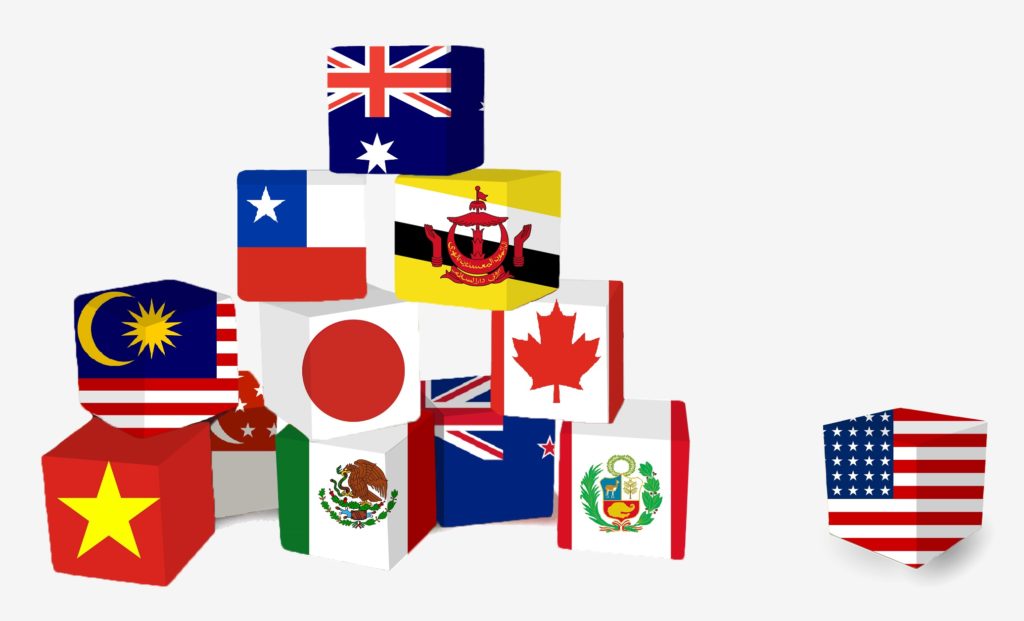The Peninsula
Korea Should Take the Lead and Create a Rump TPP
Published December 5, 2016
Category: South Korea

By Claude Barfield
Given the turmoil in Seoul at the moment, and the prospect of a new president and administration in the coming months, it may not seem a propitious time to call for bold moves in the economic and geopolitical fronts. But Korean political leaders should look beyond the current troubles and seek a vision for Korea in the East Asian regional architecture. Specifically, fulfilling its role as a leading “middle power,” Korea should move to join a rump Trans-Pacific Partnership agreement that would include the eleven nation states who negotiated the TPP with the United States.
The incoming Donald Trump administration has vowed to withdraw the U.S. from the agreement, but the remaining trans-Pacific nations together constitute a formidable economic bloc if they join together. The rump TPP, even without Korea, would represent almost 14 percent of world GDP, and over 13 percent of total world trade.
Regarding the original TPP, events are in flux, with the remaining TPP nations biding their time, some hoping (vainly) that President Trump will change his mind. But simultaneously, almost all remaining TPP members are still moving forward to ratify the TPP agreement as concluded in October 2015: this list includes Japan, Australia, New Zealand, Chile, Singapore, Malaysia, Mexico, and Canada. Vietnam has placed the agreement on hold, but has pledged to live up to TPP obligations whatever the final outcome in the United States.
Into this situation, a move by Korea to join the rump TPP would have important consequences—not least the likelihood that the move would provide a powerful push in persuading other TPP nations to go forward without the United States. Korea would add substantial economic heft to the regional pact. It occupies a key place among Asian and world middle powers: GDP, $1.4 billion; exports (2015), $428 billion, or 6th among world exporters. With an advanced electronic economy, some 89 percent of Korea households use the Internet. And finally, the Korean economy has emerged as a central component of high-end electronic and automobile supply chains, linking China, Japan and the United States. These supply chain trade relations are anchored in strategic Korean FTAs with the United States and China—but not with Japan.
Back to the Trump administration, the KORUS has attracted president-elect Trump’s personal attention—and ire. He has identified it as one of the “bad” trade agreements that he has vowed to reopen or, if Korea objects, to withdraw from the pact. Thus, as a defensive measure, it would make sense for the Seoul government to seek trade partners in facing whatever actual demands are forthcoming after the new administration gets its act in order sometime later in 2017 or 2018 (Labelling China a currency manipulator, and reopening NAFTA seem to be the first priorities).
More important, there are a number of positive reasons for Korea to grab the baton, and take leadership for an expanded TPP, even without the U.S. (It should be noted that other nations have also expressed strong interest in joining the TPP: Thailand, Indonesia, Colombia, the Philippines, as examples). First, substantively the TPP does represent a solid advance for trade liberalization. But from the Korean perspective, the agreement also constitutes a regionalization of much that is already in the KORUS. Yes, there are differences in some sectors, such as e-commerce, services, SOEs, intellectual property, and some important tariff lines. But by and large, Korea would not face difficult economic—or political adjustment in joining the TPP.
Having said that, certainly bilateral TPP negotiations with Japan would present particular problems and challenges. But for Korea, negotiating with Japan under the aegis of the regional TPP would lessen and mute some of the domestic political sensitivities. In the end, as I noted in another opinion piece on the future of the TPP, nations should move beyond the narrow mercantilist view that they must preserve the exact “delicate balance of concessions” that was embodied in the TPP that included the US. The truth is these “concessions”—whether to the U.S. or, for Korea, to Japan—are overwhelmingly trade liberalizing and will result in greater Korean competiveness down the line.
The view presented here is that the bottom line positive results of petitioning to join the TPP are at least twofold: first, if successful, the expanded TPP would present a much more powerful united front to resist and counter future demands from the Trump administration. Second, it would provide the political cover for a trade agreement with Japan, under the guise of the TPP.
Admittedly, the scenario I have laid out here has long odds—but it does present a pathway for Korea and the remaining TPP nations to go forward toward deeper regional integration, without having to wait for the “big boys”—the U.S. and China—to get their act together.
Claude Barfield is a Resident Scholar at the American Enterprise Institute. The views expressed here are the author’s alone.
Image created by Jenna Gibson of the Korea Economic Institute of America.
